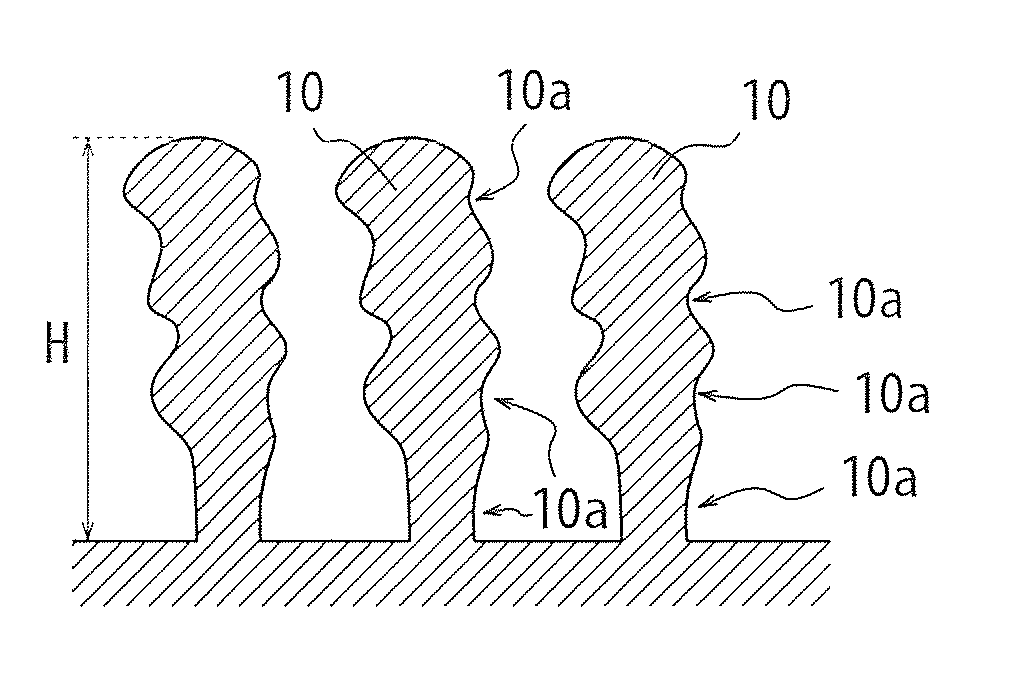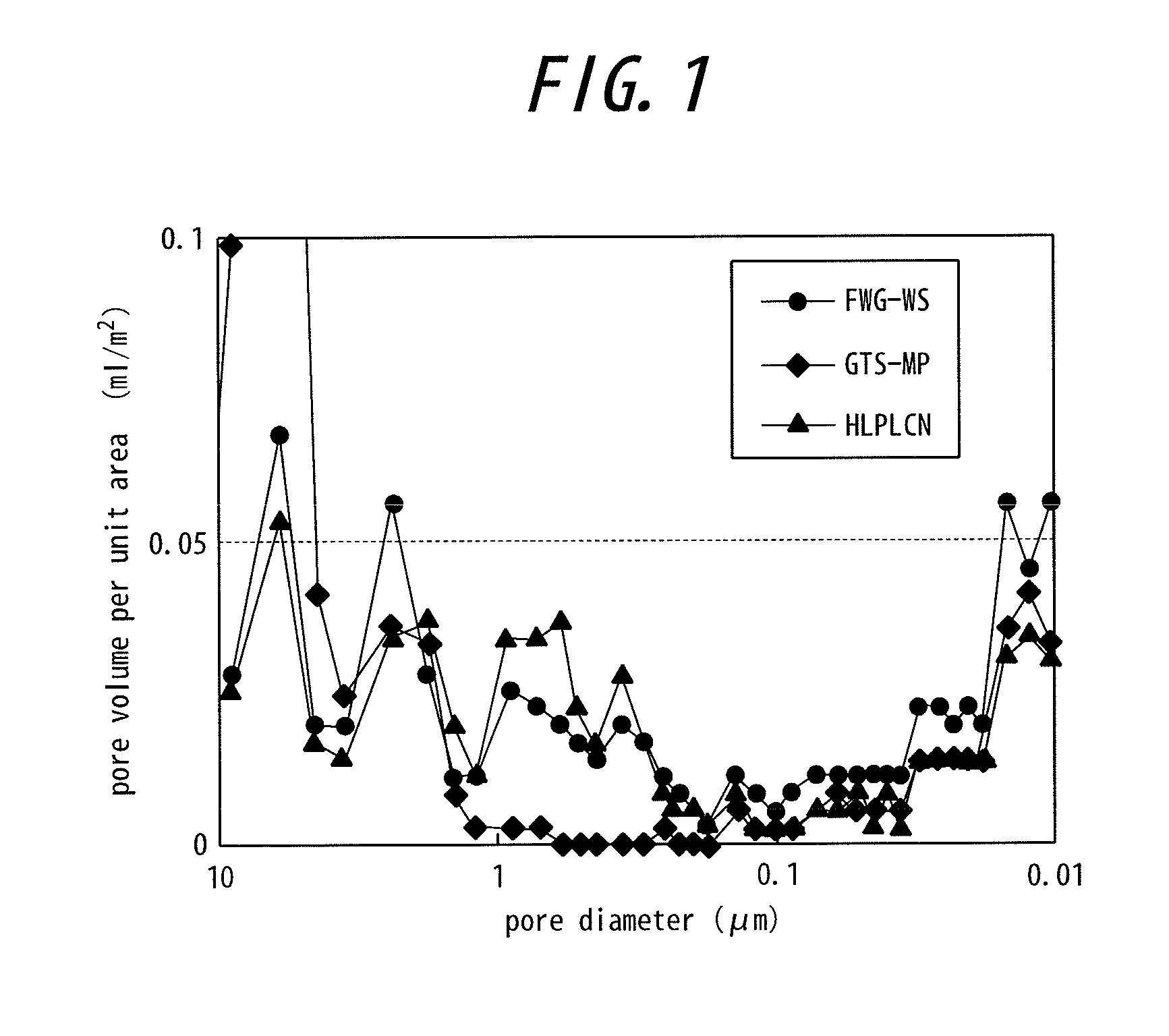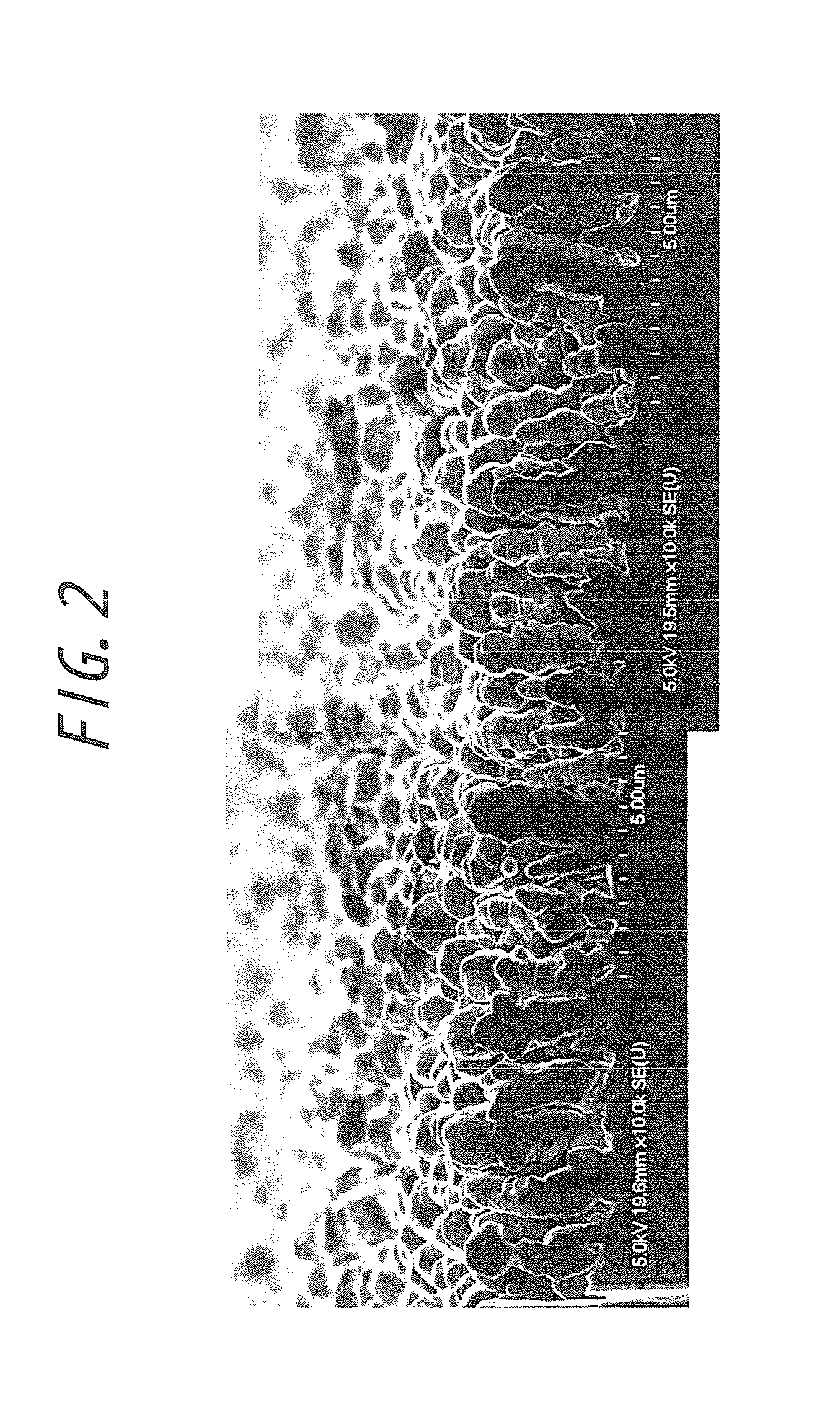Resin composite electrolytic copper foil, copper clad laminate and printed wiring board
a technology of copper clad laminate and printed wiring board, which is applied in the directions of printed circuit aspects, transportation and packaging, chemistry apparatus and processes, etc., can solve the problems of lack of adhesion strength, heat resistance, adhesiveness and heat resistance, and deterioration of location accuracy of circuit and adhesion strength, so as to improve heat resistance and improve plate adhesion strength.
- Summary
- Abstract
- Description
- Claims
- Application Information
AI Technical Summary
Benefits of technology
Problems solved by technology
Method used
Image
Examples
synthesis example 1
[0083]To a 2 L three neck flask having a reflux cooler equipped with a ball cooling tube mounted on a trap with an anchor shaped stirring stick, a nitrogen introducing tube and a stop cock of stainless steel, 117.68 g (400 mmol) of 3,4,3′,4′-biphenyl tetracarboxylic dianhydride, 87.7 g (300 mmol) of 1,3-bis(3-aminophenoxy)benzene, 4.0 g (40 mmol) of γ-valerolactone, 4.8 g (60 mmol) of pyridine, 300 g of N-methyl-2-pyrrolidone (hereinafter referred to as NMP) and 20 g of toluene were added, heated at 180° C. for 1 hour and then cooled to about room temperature, and subsequently 29.42 g (100 mmol) of 3,4,3′,4′-biphenyl tetracarboxylic dianhydride, 82.12 g (200 mmol) of 2,2-bis[4-(4-aminophenoxy)phenyl]propane, 200 g of NMP and 40 g of toluene were added, mixed at room temperature for 1 hour and then heated at 180° C. for 3 hours to obtain a block copolymerized polyimide resin with a solid content of 38%. In this block copolymerized polyimide resin, general formula (1): general formula...
synthesis example 2
[0084]To a 2 L three neck flask having a reflux cooler equipped with a ball cooling tube mounted on a trap with an anchor shaped stirring stick, a nitrogen introducing tube and a stop cock of stainless steel, 117.68 g (400 mmol) of 3,4,3′,4′-biphenyl tetracarboxylic dianhydride, 123.18 g (300 mmol) of 2,2-bis[4-(4-aminophenoxy)phenyl]propane, 4.0 g (40 mmol) of γ-valerolactone, 4.8 g (60 mmol) of pyridine, 300 g of NMP and 20 g of toluene were added, heated at 180° C. for 1 hour and then cooled to about room temperature, and subsequently 29.42 g (100 mmol) of 3,4,3′,4′-biphenyl tetracarboxylic dianhydride, 58.47 g (200 mmol) of 1,3-bis(3-aminophenoxy)benzene, 200 g of NMP and 40 g of toluene were added, mixed at room temperature for 1 hour and then heated at 180° C. for 3 hours to obtain a block copolymerized polyimide resin with a solid content of 38%. In this block copolymerized polyimide resin, general formula (1): general formula (2)=2:3, number average molecular weight: 75000, ...
synthesis example 3
[0085]To a 2 L three neck flask having a reflux cooler equipped with a ball cooling tube mounted on a trap with an anchor shaped stirring stick, a nitrogen introducing tube and a stopcock of stainless steel, 117.68 g (400 mmol) of 3,4,3′,4′-biphenyl tetracarboxylic dianhydride, 73.08 g (250 mmol) of 1,3-bis(3-aminophenoxy)benzene, 4.0 g (40 mmol) of γ-valerolactone, 4.8 g (60 mmol) of pyridine, 300 g of N-methyl-2-pyrrolidone (hereinafter referred to as NMP) and 20 g of toluene were added, heated at 180° C. for 1 hour and then cooled to about room temperature, and subsequently 29.42 g (100 mmol) of 3,4,3′,4′-biphenyl tetracarboxylic dianhydride, 102.65 g (250 mmol) of 2,2-bis[4-(4-aminophenoxy)phenyl]propane, 200 g of NMP and 40 g of toluene were added, mixed at room temperature for 1 hour and then heated at 180° C. for 2 hours to obtain a block copolymerized polyimide with a solid content of 38%. In this block copolymerized polyimide, general formula (1): general formula (2)=1:1, n...
PUM
| Property | Measurement | Unit |
|---|---|---|
| Length | aaaaa | aaaaa |
| Length | aaaaa | aaaaa |
| Length | aaaaa | aaaaa |
Abstract
Description
Claims
Application Information
 Login to View More
Login to View More - R&D
- Intellectual Property
- Life Sciences
- Materials
- Tech Scout
- Unparalleled Data Quality
- Higher Quality Content
- 60% Fewer Hallucinations
Browse by: Latest US Patents, China's latest patents, Technical Efficacy Thesaurus, Application Domain, Technology Topic, Popular Technical Reports.
© 2025 PatSnap. All rights reserved.Legal|Privacy policy|Modern Slavery Act Transparency Statement|Sitemap|About US| Contact US: help@patsnap.com



